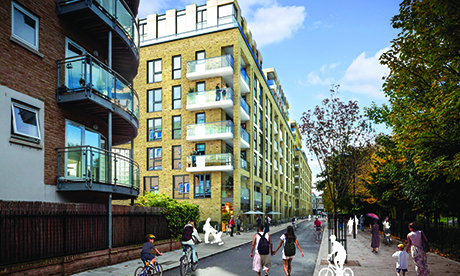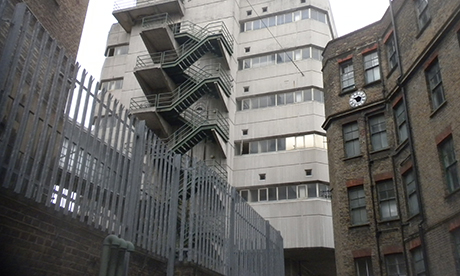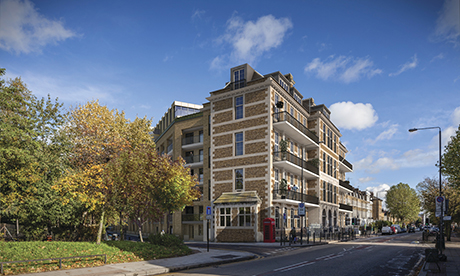Homes plan means Children’s Hospital buildings face wrecking ball

How it will look: the housing development on the hospital site. Image: Rydon
Historic hospital buildings will be demolished to make way for new homes despite protests from residents.
All but the façade of a derelict complex of buildings on Hackney Road that once housed the Queen Elizabeth Children’s Hospital will be swept away and replaced with 188 new residential units – many affordable – as part of plans by developers Rydon and housing association Family Mosaic.
Opponents who live nearby do not doubt the dire need for affordable housing, but many cite the historic importance of the architecture facing the wrecking ball, some of which dates from 1868.
Lucy Rogers, who lives near the 0.64 hectare former hospital site, said: “We have to remember quite an important fact, which is that the process to choose the developer was private. We have not been allowed to scrutinise how the decision was made, which is bad for democracy.
“One of the other developers tendering favoured a scheme that retained the buildings, so it’s not like a sort of cloud cuckoo land idea.”

How it looks now: part of the hospital site (obscured from Hackney Road) including Victorian buildings and the ‘New Brutalist’ 1960s extension. Photograph: Josh Loeb
Houston, we have a problem
She added: “We are losing London’s built heritage at such a pace we won’t have anything left. We will be left with this generic environment. If we want that, we might as well all move to Houston in Texas.”
Part of the complex was once a Victorian workhouse, while a more recently-built extension designed by firm Lyons Israel Ellis in the ‘New Brutalism’ style in 1965 is also worthy of preservation, according to amenity group The Hackney Society
In an article about the development in the most recent issue of The Hackney Society’s newsletter Spaces, David Shaw wrote: “The site, which had been empty for many years, cries out for development, but it is disappointing that the collection of buildings that currently occupies the site will be replaced by such an uninspired, unlovely and unimaginative proposal.
“Disappointing as well that other options and designs were not fully explored and the views of the objectors so readily dismissed.”

How the frontage of the former Queen Elizabeth Children’s Hospital will look when restored. Image: Family Mosaic
Resident Oliver Lazarus said he was still speaking to planners in the hope they would alter their plans to take on board suggestions that they include more ground floor retail units as part of the scheme.
He added that the imposing height of seven-storey block planned to replace the hospital was also an issue for other residents.
Mr Lazarus said: “Personally I wasn’t upset about the height of the building because I think that is just the way London’s going, but a lot of people were upset because it was totally maxed out.
“You couldn’t have built any higher or any denser, and there is going to be overshadowing of Haggerston Park.”
‘No greater priority’
The project is due for completion in 2015 and includes 38 per cent affordable housing for both renting and buying, comprising larger three or four bedroomed family homes as well as smaller units.
Shared ownership or mixed tenure options for buying are available through Family Mosaic.
The Queen Elizabeth Children’s Hospital complex lies just over the border from Hackney in Tower Hamlets and has been derelict since 1997.
The development plans won approval from Tower Hamlets Council in August and are being backed by the Mayor of London.
Richard Blakeway, Deputy Mayor for Housing, Land and Property, said: “There is no greater priority than tackling London’s housing needs and it is imperative that long-standing empty sites are put back into use.”
He added: “The Mayor has ensured the design incorporates some of the original architecture of the former hospital, retaining the historic front façade as a permanent reminder of the site’s heritage.”
